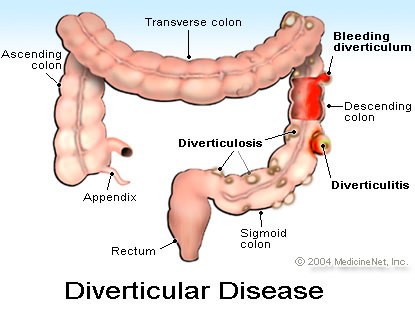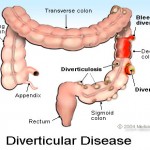Lactose Intolerance
Between 30 million and 50 million Americans are lactose intolerant, meaning they lack an enzyme needed to digest the main sugar in milk, and African-Americans, Asians, and American Indians are most likely to have the condition. Ranging in severity from person to person, symptoms include cramping, bloating, gas, nausea, and diarrhea. These usually occur 30 minutes to two hours after one drinks or eats a dairy product.
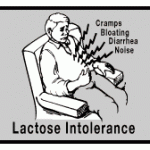 Doctors can test for lactose intolerance using a breath test, which detects heightened levels of hydrogen; a blood test, before which the patient drinks a lactose-containing beverage; or a test of stool acidity (which undigested lactose helps generate). There’s also a cheaper, do-it-yourself approach to diagnosis, says Stephen Bickston, an American Gastroenterological Association fellow and professor of internal medicine at the University of Virginia. “Buy a tall container of milk, drink it, and call me the next day and tell me how the afternoon was,” he says. If you experience bloating, abdominal pain, or diarrhea, he says, you’re probably lactose intolerant.
Doctors can test for lactose intolerance using a breath test, which detects heightened levels of hydrogen; a blood test, before which the patient drinks a lactose-containing beverage; or a test of stool acidity (which undigested lactose helps generate). There’s also a cheaper, do-it-yourself approach to diagnosis, says Stephen Bickston, an American Gastroenterological Association fellow and professor of internal medicine at the University of Virginia. “Buy a tall container of milk, drink it, and call me the next day and tell me how the afternoon was,” he says. If you experience bloating, abdominal pain, or diarrhea, he says, you’re probably lactose intolerant.
If so, don’t despair. Over-the-counter pills can replace the missing enzyme, called lactase, and some milk and milk substitutes are lactose free. Avoiding all dairy products, in any case, may not be necessary. Many lactase-deficient people “can tolerate small amounts of lactose,” Bickston says.
Diverticulitis
By one estimate, 3 in 5 Americans older than 70 have the abnormal bulges called diverticula somewhere in the wall of their intestinal tract. Yet only 20 percent will ever experience a complication like diverticulitis (inflammation of a pouch), a tear, or an abscess.
Doctors have long advised people with diverticula to avoid nuts, corn, and popcorn for fear those foods would get lodged in a pouch during digestion and wreak havoc. But in August, research published in the Journal of the American Medical Association found that regular consumption of these foods did not boost the risk of diverticular complications. In fact, eating plenty of nuts and popcorn seemed to lower risk.
When diverticulitis does arise, it’s very likely to make its presence known through abdominal pain—typically in the lower left quadrant in westerners, but often on the right side in Asians—and possibly fever; antibiotics can treat the condition. In extreme cases, a tear can lead to an abscess, which can cause nausea, vomiting, fever, and intense abdominal tenderness that requires a surgical fix. Some experts believe a diet too low in fiber may trigger the condition, which grows increasingly common with age and is most prevalent in western societies.
Inflammatory Bowel Disease
People with Crohn’s disease or ulcerative colitis, the two most common inflammatory bowel diseases, complain of abdominal pain and diarrhea and sometimes experience anemia, rectal bleeding, weight loss, or other symptoms. No definitive test exists for either disease, and patients endure two initial misdiagnoses on average, says R. Balfour Sartor, chief medical adviser to the Crohn’s & Colitis Foundation of America. With Crohn’s, he says, appendicitis, irritable bowel syndrome, an ulcer, or an infection is often wrongly suspected.
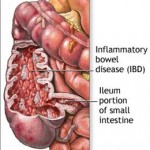 Both disorders may arise from a wayward immune system that leads the body to attack the gastrointestinal tract. Crohn’s involves ulcers that may burrow deep into the tissue lining at any portion of the GI tract, leading to infection and thickening of the intestinal wall and blockages that need surgery. Ulcerative colitis, by contrast, afflicts only the colon and rectum, where it also causes ulcers; colitis is characterized by bleeding and pus.
Both disorders may arise from a wayward immune system that leads the body to attack the gastrointestinal tract. Crohn’s involves ulcers that may burrow deep into the tissue lining at any portion of the GI tract, leading to infection and thickening of the intestinal wall and blockages that need surgery. Ulcerative colitis, by contrast, afflicts only the colon and rectum, where it also causes ulcers; colitis is characterized by bleeding and pus.
Treating either disease requires beating back—and then continuously holding in check—the inappropriate inflammatory response. Both steps are achieved through some combination of prescription anti-inflammatories, steroids, and immunosuppressants. Crohn’s patients may also be given antibiotics or other specialized drugs. Of current hot debate is whether Crohn’s sufferers benefit if given highly potent drugs early in the course of treatment as opposed to escalating potency over time from milder initial treatments, as is traditionally done, explains Themos Dassopoulos, codirector of inflammatory bowel diseases at Washington University in St. Louis.
Surgery “cures” ulcerative colitis by removing the colon but means patients must wear a pouch—internally or externally—for waste. IBD patients should take special care when popping NSAIDs like aspirin, as these painkillers can trigger further gut inflammation in 10 to 20 percent of patients, says Dassopoulos.
Constipation
The fact that Americans spend $725 million a year on laxatives suggests that trying to unclog the nation’s plumbing, so to speak, is almost a national pastime. But overuse of stimulant laxatives, which cause the intestines to contract rhythmically, can make the gut dependent, requiring more of the drug and eventually rendering the aid ineffective.
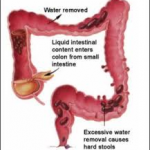 First, a bit of clarification on the, um, frequency of your flushing: There’s no need to obsess about having a daily bowel movement; anywhere between three times a day and three times a week is normal, says AGA President Sandler.
First, a bit of clarification on the, um, frequency of your flushing: There’s no need to obsess about having a daily bowel movement; anywhere between three times a day and three times a week is normal, says AGA President Sandler.
But if you’re experiencing discomfort and can’t make your bowels move, try an over-the-counter remedy like good old milk of magnesia, he says. And whether you’ve tried laxatives or not, going a week without a bowel movement is good reason to visit the doc, says Sandler. Constipation, hard stools, and straining could lead to hemorrhoids or an anal fissure.
Constipation is best avoided through regular exercise and a diet high in fiber from whole grains, fruits, and vegetables. To older folks, who tend to get constipated more frequently: Be sure you’re hydrating properly and aware of any medications that might be causing the holdup.
